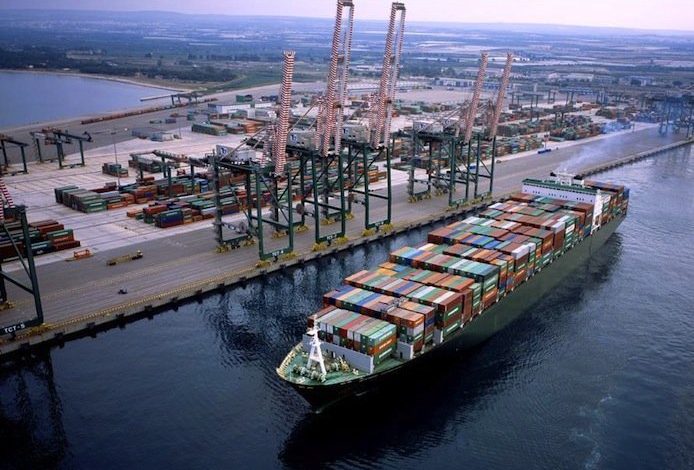Liners on track to secure up to $100bn profit this year

Drewry’s latest Container Forecaster report has carried out a massive upgrade of liner profits for the full year.
Drewry is now forecasting the container shipping industry will post a record $80bn profit in 2021, up from earlier forecasts of $35bn. If freight rates surpass expectations in the remainder of the year, Drewry said an annual profit line in the region of $100bn is not out of the question, more than three times the all-time liner record.
“2021 will be the first year in the history of container shipping when carrier profits approach $100 billion and average freight rates jump by 50%, against a background of huge operational disruptions to the port and ship systems,” the UK consultancy noted.
Drewry predicts that box volumes will continue to rise through the Q3 peak season and to end the year with annual growth of approximately 10%, cementing what has been a banner, record year for the industry.
The world has run out of white swans, and there is now a $2,000 surcharge to even secure a black swan
“We are now getting accustomed to seeing triple-digit annual growth rates for spot rates on most lanes. That these instances are no longer shocking is further proof, if needed, that the market truly is crazy right now,” the UK analysts noted.
As far as 2022 goes, Drewry suggests there will still be growth, but probably only about half as strong as consumer spending is expected to move back towards services as Covid-related restrictions are lifted. For 2022, Drewry expects EBIT to drop by a bit more than one-third due to softening freight rates and rising costs that may stay higher for longer with many carriers locking into expensive longer-term charter fixtures.
Looking further ahead, Drewry maintains the view that high levels of newbuild contracting for 2023 pose a risk of overcapacity returning to the market during that year, but future supply requirements are heavily clouded by new environment regulations due to become law at the start of 2023, that may or may not see significant chunks of the containership fleet slowdown in order to comply.
“[Carrriers] will have made so much money between 2020-22 that they will be set up for years to come. They could potentially make as much profit in this window as they could have hoped in a decade, or more,” Drewry concluded.
Looking at the $100bn profit figure posited by Drewry, Lars Jensen, CEO of container advisory Vespucci Maritime, suggested that container shipping was set to make up for 20 years of value destruction in the space of a single year.
In 2018, McKinsey published a report looking at the pprevious 20 years of profitability in the container shipping industry. The report from three years ago estimated that the liner industry had destroyed more than $100bn in shareholder value over the previous 20 years.
Shippers hoping this year was a temporary blip and a return to the low rates of the previous decade are in for a disappointment, Jensen suggested via LinkedIn.
The “new normal” for container shipping will see rates higher than before the pandemic, Jensen predicted. This new normal would feature less overcapacity thanks to the huge consolidation seen in the sector in recent years.
The decades where carriers – on average – were selling freight below full cost levels are over
“The decades where carriers – on average – were selling freight below full cost levels are over,” Jensen maintained.
Alan Murphy, founder of box consultancy Sea-Intelligence, writing in his company’s regular Sunday Spotlight newsletter, discussed today’s unprecedented liner environment.
“Economists like to refer to unpredictable and wide-impacting events as ‘Black Swans’, adopted from the epistemological challenge to inductivist philosophy that knowledge must come from more than just pure empiricism: If your world view is built on the notion ‘all swans we have ever seen are white, and, therefore, all swans must be white’, then your world is going to break when you spot a black swan, common to Australia,” Murphy wrote, adding: “Any model built to predict the future of container shipping has been designed in a world populated entirely with white swans, and suddenly, the world has run out of white swans, and there is now a 2,000 dollar surcharge to even secure a black swan.”
Patrik Berglund, the CEO of freight rate benchmarking platform Xeneta, commented today: “Carriers unquestionably have the upper hand and are in a strong position to exploit the budgets of big volume shippers.” Berglund said shippers should brace themselves for the carriers’ and forwarders’ Q2 financials.
“It will be a joyful moment for the sellers, but painful for the rest of the market,” Berglund warned.

